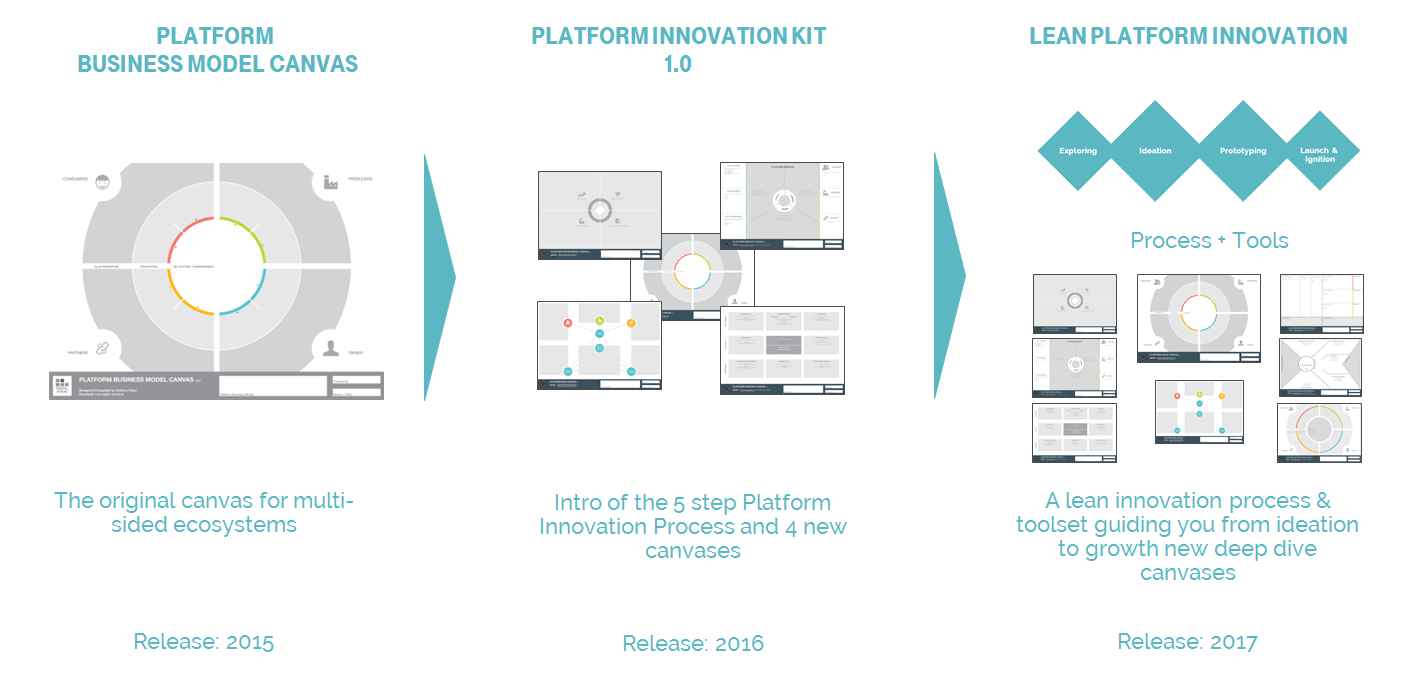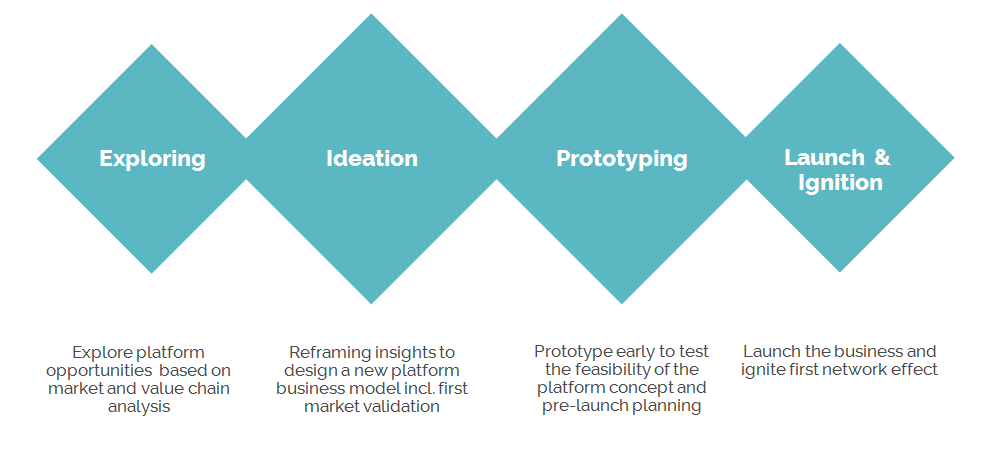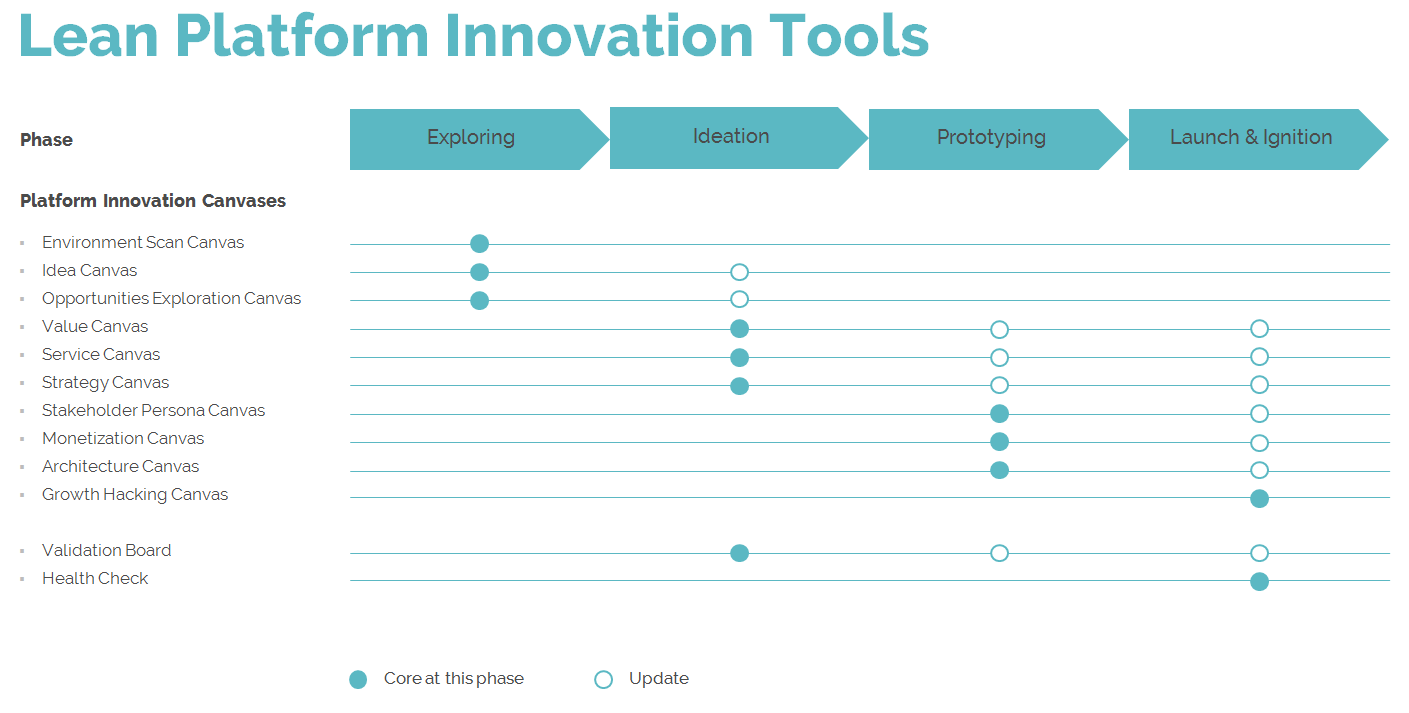Introduction to Lean Platform Innovation
This blog post will introduce you to the “Lean Platform Innovation” (LPI) process. A methodology based on best practices from 3 years of building platform businesses — helping startups or coporates to go from ecosystem ideation to launch to network effect ignition.

Since over three years startups and corporates used our tools and advices to invent new platform business models — first with the Platform Business Model Canvas, later with the Platform Innovation Kit. We learnt early that our clients want more than just an initial design of a platform business — they want a process which guides them from ideation to implementation. Customer validation, pivoting and taking the right scaling steps at the right moment are the most requested activities.
We are hugh fans of the steve blank Customer Validation process and the Lean Startup approach by Eric Ries. They brought startups the right mindset on how to act when launching a new business. When we work with our clients we also teach them this mindset, but we go further and developed a framework / process for the platform generation.
We learnt two points:
- there is definitly a strong need for such a guiding framework, especially for platforms business models which require a shift in mindset
- there are more tools necessary then just our 5 core canvases from the Platform Innovation Kit 1.0
Based on that, we worked hard, created new tools, updated our process and fine tuned it over the last year throughout customer engagement. And here he is …
Overview of the Lean Platform Innovation process

Basically each innovation follows an agile and iterative process. We learnt that platform grow in 4 phases.
First you need to explore new market opportunities based on a completely new idea or by analyzing the status quo and find new ways to 1) de-link assets from value, 2) create a new form of market aggregation or 3) by re-intermediation (more about the 3 strategies in a separate post).
In the second step you take your most promising opportunity and design the business model in detail. Understanding the stakeholder motiviation and how your value proposition can cover the to observed needs.
After that you prototype your platform to test your main assumptions and learn. You will learn a lot — technically but most important about the market, priceses, needs, etc. All those learnings have to be reflected against the original business model and will allow you to pivot fast and cheap.
In the fourth stept you launch your platform to the public market and further ignite the growth by taking the right growth hacking acitivities.
For each phase we developed further tools which can be used in workshops to bring the platform team together.
Tools and Book

As you can see in the chart above, for each phase we developed a specific canvas / tool which can be applied.